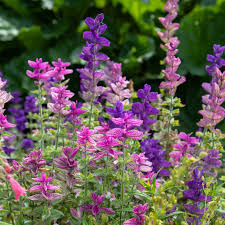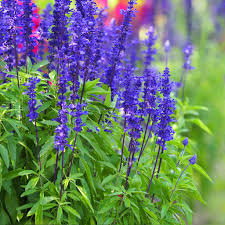Sage (Salvia officinalis) is a versatile herb that offers multiple benefits for gardeners. Not only is it a flavorful addition to the kitchen, but it also adds beauty to your garden, with its striking blue flowers that bloom in spikes. Additionally, sage holds a place in spiritual traditions. When bundled and dried, sage can be used as a smudge stick, a practice originating from Native American culture to clear negative energy and purify spaces.
However, garden sage does have one limitation: it struggles with extremely cold temperatures. In regions where winter temperatures regularly dip below 0°F (-18°C), sage is best grown as an annual, although in milder climates, it can thrive as a perennial. Variegated pineapple sage is even less cold-hardy but makes a beautiful and edible ornamental for containers or visible garden areas. While I lose my culinary sage plants to winter every few years, I consider it an opportunity to start fresh with new plants.
Sage’s smoky, spicy flavor pairs perfectly with a variety of dishes, including poultry, potatoes, and pasta. It is especially delightful when whole sage leaves are fried in olive oil and sprinkled with sea salt for a crispy garnish. For long-term storage, sage leaves can be dried and kept in a cool, dry place in glass jars to be used during winter months.
Growing Sage for Flowers
In addition to garden sage, I also love cultivating scarlet sage (Salvia coccinea), which attracts hummingbirds and butterflies. This easy-to-grow annual blooms in vibrant red, although softer coral varieties are available for those who prefer subtler tones. The variety ‘Summer Jewel Red’ has even won multiple awards, including All America Selections and Fleuroselect. I start scarlet sage seeds indoors in mid-spring, alongside my tomatoes, and by midsummer, the plants are ready to bloom. The following year, I often find new scarlet sage seedlings emerging on their own, allowing me to relocate them where needed.
Another popular sage species, Salvia elegans, sometimes also goes by the name “scarlet sage,” though it comes in a variety of colors, including bicolored varieties. While annual salvias look stunning when given warmth, water, and fertilizer, they do attract whiteflies and provide minimal nectar to butterflies, which makes them less ideal for pollinator gardens compared to other sages.

Getting Clear on Clary Sage
Another fascinating sage to grow is painted sage (Salvia viridis), commonly referred to as annual clary sage. Known for its colorful bracts at the tips of the stems, this fast-growing annual adds beauty to gardens, cut flower arrangements, and dried flower displays. Varieties like ‘Claryssa Mixed’ come in shades of blue, pink, and white, while ‘Blue Monday’ features a striking all-blue color.
It’s important to note that true clary sage (Salvia sclarea), a biennial or short-lived perennial, is considered a noxious weed in Washington State due to its tendency to self-seed aggressively. True clary sage produces large, coarse leaves in the spring, followed by fragrant lilac-colored flowers. While the scent is beloved by some, others find it overpowering, so it may not be for everyone.

Sage in Ritual and Purification
Sage has long been used in purification rituals, a practice that can help clear negative energy from your living space. Instead of risking setting off a fire alarm with a burning smudge stick, a simple alternative is to crush a few sage leaves in your hands. Hold them in a cupped position and slowly turn in a clockwise direction, reciting a prayer or mantra that feels meaningful to you. This mindful ritual can bring a sense of calm and clarity into your life.
In conclusion, growing sage provides more than just culinary enjoyment. It offers beauty for the garden, attracts beneficial wildlife, and even has spiritual uses. Whether you grow it for its flavor, its flowers, or its purification properties, sage is a plant that serves many purposes.
